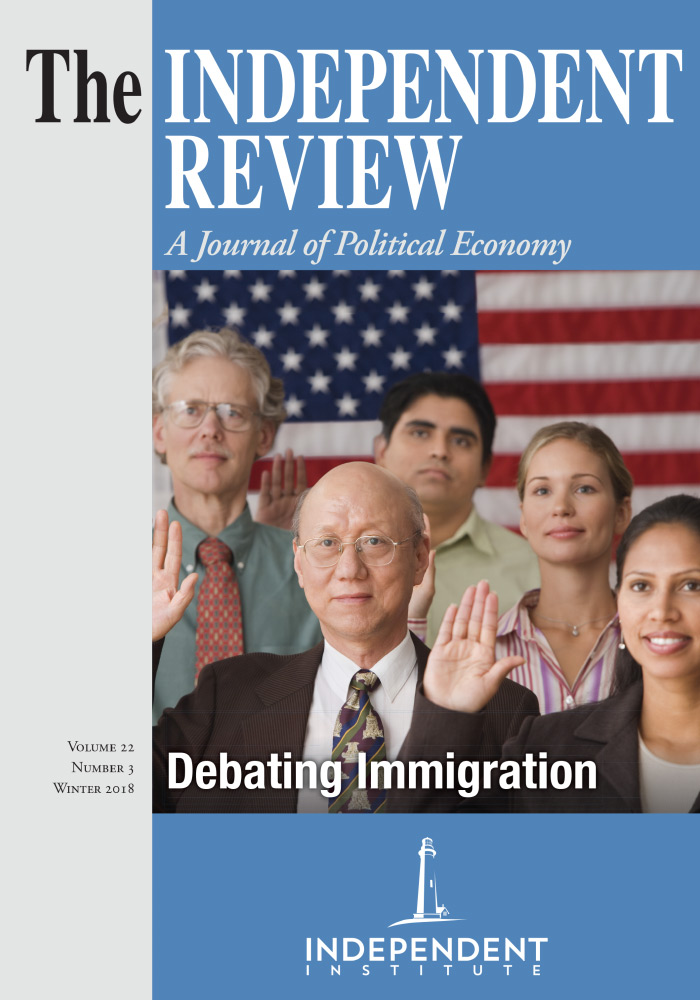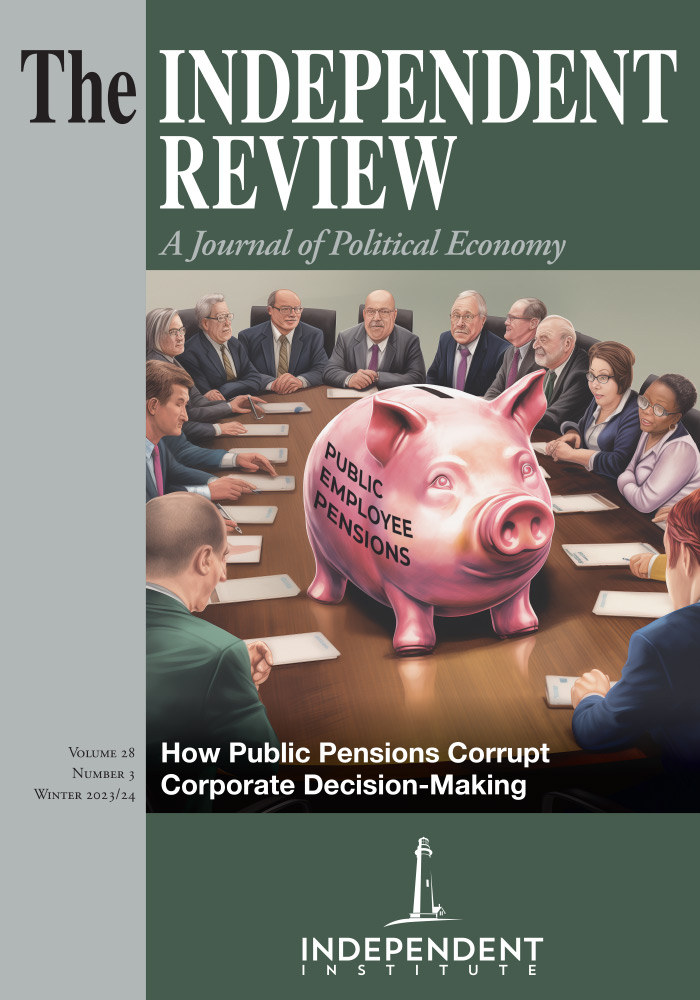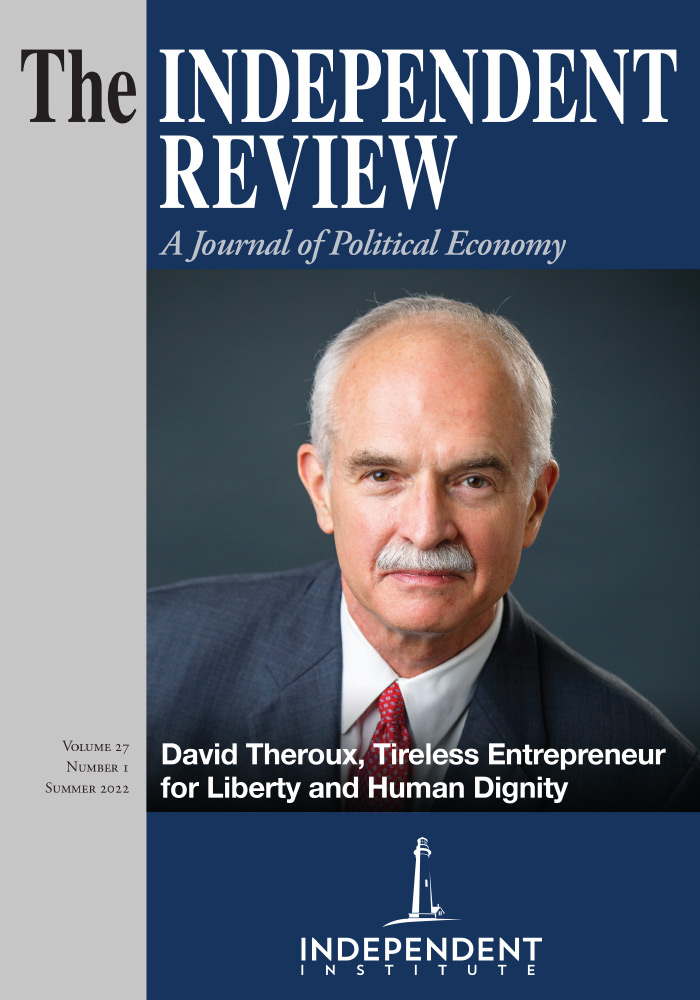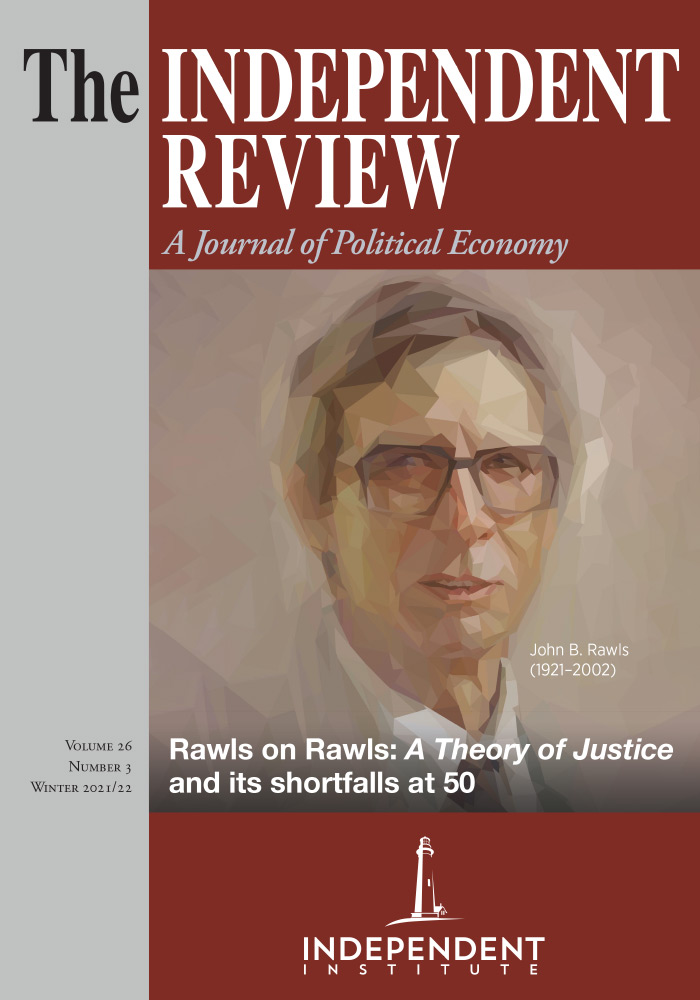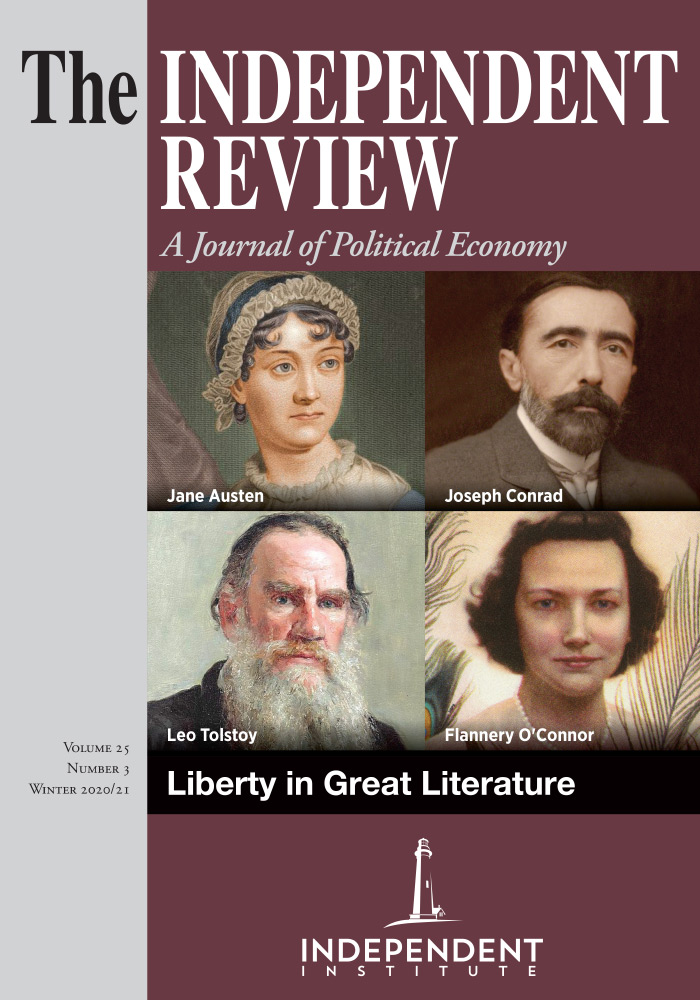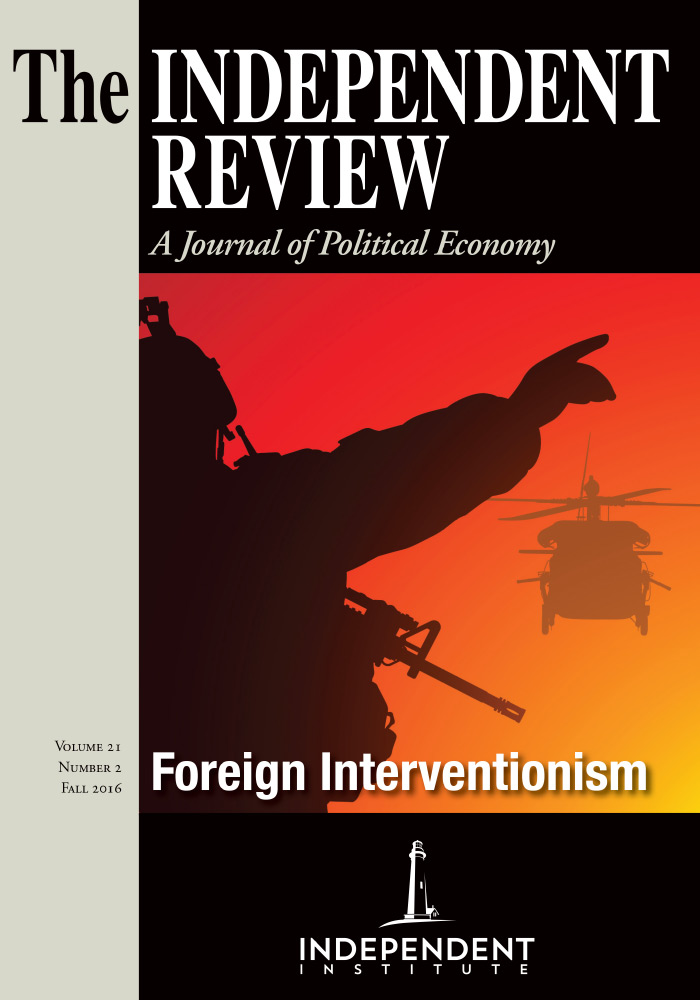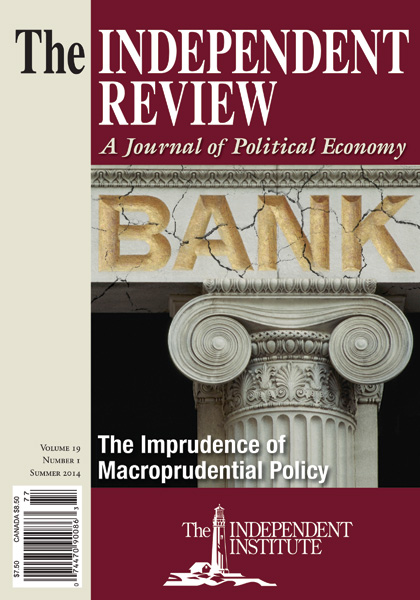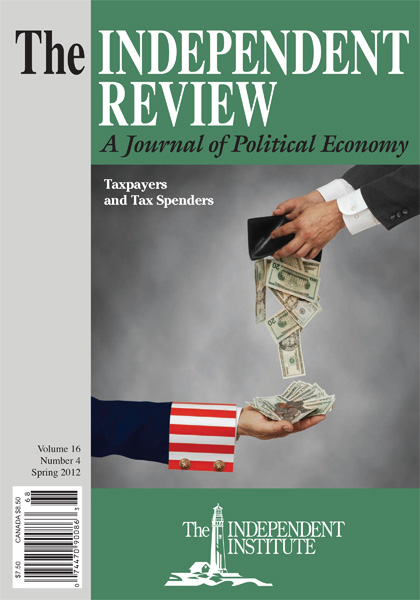Economists often argue that the net benefits from immigration are on as strong an intellectual footing as the net gains from international trade. The Independent Review’s symposium on immigration leads with a dissent from this view, by esteemed Harvard University professor George J. Borjas, followed by replies from two other economists.
Article
Immigration to the United States has increased substantially in recent decades, rising from about 330,000 per year in the period 1961–70 to 1,050,000 per year in the period 2009–15 (Cohn 2017).1 In the process, the foreign-born population has risen from 9.7 million to 43.2 million, with the portion of foreign born rising from 5.4 percent of the population to 14.1 percent (Lopez and Radford 2017)—not far below the record of 14.8 percent in 1890. This pattern is not unique to the United States: 20 percent of Canada’s population is foreign born, and nearly 30 percent of Australia’s population were born elsewhere.
In a familiar historical pattern, high levels of immigration have made immigration policy a potent political issue. Unsurprisingly, the topic has drawn keen attention from social scientists. Many American economists argue that theories demonstrating positive net benefits from international free trade in goods and services also carry over to the free movement of workers. One noted exception to this “economistic” perspective is George Borjas—author of a stream of important research articles on the economics of immigration and a recent, influential book: We Wanted Workers: Unraveling the Immigration Narrative (2016). This symposium features Borjas’s overview of the key arguments and evidence in his book and two responses to his essay.
Borjas’s central argument is that immigration—like trade—produces winners and losers. Its net benefits may (or may not) be positive, but this tells us little because its most noticeable impact on individuals and communities is redistributive. In an essay published in this issue of The Independent Review, he estimates that “[i]mmigration is responsible for a huge redistribution of wealth, totaling around half-a-trillion dollars per year, from native workers who compete with immigrants to those natives who use or employ immigrant labor.” Immigration also has important effects on the fiscal health of the republic, but this impact is exceptionally tricky to parse out. As Borjas puts it in this essay, “Perhaps it is time for us ‘experts’ to admit the obvious: we have little clue about how immigrants affect the cost of providing public goods, and we have no clue about the future path of taxes and government spending.” Accordingly, “all the available estimates of the long-run fiscal impact” of immigration “are useless.”
In his response to Borjas’s essay, Benjamin Powell argues that Borjas has it wrong. Instead of clarifying the picture, Borjas has obscured it. Instead of “unraveling” the narrative on the impact of immigration, he has “raveled” it. Powell’s most fundamental critique is that Borjas’s argument almost completely ignores the primary beneficiaries from immigration—the immigrants themselves. Once the immigrants count in the calculus, the net gain of immigration to the United States is truly massive—about $2 trillion a year. Powell also critiques Borjas for ignoring a crop of recent studies that show that supposedly worrying negative side effects of immigration—such as its impacts on total factor productivity and institutional quality—are not so worrisome.
Garett Jones widens the debate beyond the narrowly economic to include political feedback loops from immigration. He argues in his essay in this symposium that the recent surge of populism in the United States and Europe may be a shared symptom with a common cause: high rates of immigration. If so, the costs of immigration may greatly exceed the standard costs estimated by economists because the backlash against high levels of immigration may include an erosion of social trust and a weakening of the institutions and policies that have fostered long-term economic flourishing.
Borjas, Powell, and Jones end up raising far more questions than they answer. If Jones is correct and American institutions have begun to change due to the surge of immigration, might these changes come not only from the reaction of American-born voters but also from the preferences and culture of immigrants, too? Carlos Newland (forthcoming) shows that attitudes toward markets vary considerably from country to country. His Free-Market Mentality Index shows that “Anglosphere” countries, such as the United States, have unusually favorable attitudes toward free markets—which probably explains why their economies are freer and more prosperous. As more immigrants arrive from places where people are less favorable toward free markets, will the political equilibrium shift away from market-friendly institutions? Has this shift already begun to occur? There’s an elephant in the room that all our authors have (prudently?) ignored. Immigrants to the United States clearly do affect the location of the “median voter.” In the past few presidential elections, people with backgrounds in Latin America and Asia—the primary source of recent immigration—voted by more than two to one in favor of candidates (such as Barack Obama) who generally favor significant expansion of government’s role in the economy (Krogstad and Lopez 2016).
Politics is the art of compromise. Powell holds out the possibility of a political trade in which immigrants compensate the native-born workers with whom they compete—making immigration a win–win proposition. “Someone who cares only about the welfare of natives and does not count the welfare of immigrants at all would have to be thoroughly uncreative not to be able to design tax and redistribution programs that could redistribute . . . some of the $2 trillion in gains away from the immigrants and to the native-born population (perhaps to those who compete with immigrants?).” And yet this grand package hasn’t been implemented and garners very little attention in today’s debates. Economists are often too optimistic about the potential for Coasian bargains with side payments to make it through the political process intact. As is often the case, then, either this task is harder to achieve than economists imagine, or our political entrepreneurs are not as creative as we envision.
Powell asks another important question: “Would the addition of another 40 million immigrants to the United States require any more aircraft carriers or nuclear missiles?” Won’t immigration allow us to spread the fixed costs of public goods across more taxpayers, reducing the burden on each? Economists might answer in unison that immigration won’t require any additional defense spending because defense is a classic public good. But politics is a tricky business. Is unchanged military spending the likely political equilibrium? If there were 40 million more taxpayers adding to the coffers, would the addition to military spending really be zero?
In the interdisciplinary spirit of The Independent Review, we hope that these articles will push readers to consider immigration in its broadest context. Attitudes about immigration policy ideally won’t simply boil down to a matter of “Who are you rooting for?” as Borjas asks at the end of his essay. But they often do. So who would a caring person favor? The striving immigrant from a far-off country, trapped in a dysfunctional economic and political system? Or the American-born worker with whom the immigrant is most likely to compete, perhaps the one who dropped out of high school or community college in a poor urban or rural area, who faces a life of low economic status in our less-than-perfect political system? Reasonable people will differ.
Notes
1. This figure omits illegal immigration, but the latter variable is partially picked up in the estimates of the foreign-born population.
References
Borjas, George J. 2016. We Wanted Workers: Unraveling the Immigration Narrative. New York: Norton.
Cohn, Raymond. 2017. Immigration to the United States. In EH.Net Encyclopedia of Economic and Business History, edited by Robert Whaples.
Krogstad, Jens Manuel, and Mark Hugo Lopez. 2016. Hillary Clinton Won Latino Vote but Fell below 2012 Support for Obama. Pew Research Center, November 29.
Lopez, Gustavo, and Jynnah Radford. 2017. Statistical Portrait of the Foreign-Born Population in the United States. Pew Research Center, May 3.
Newland, Carlos. Is Support for Capitalism Declining around the World? A Free-Market Mentality Index (FMMI), 1990–2012. The Independent Review.
| Other Independent Review articles by Robert M. Whaples | ||
| Spring 2025 | Millennials, Gen Zs, Capitalism, Socialism, and Confusion | |
| Spring 2025 | Not Stolen: The Truth about European Colonialism in the New World | |
| Spring 2025 | Green Breakdown: The Coming Renewable Energy Failure | |
| [View All (106)] | ||

